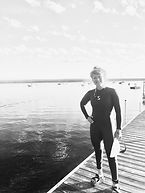
WELCOME
Over the past 25 years I have enjoyed working in health & wellness. In the early 2000's, I was drawn to Asia where I worked with Ayurvedic practitioners, Shamans, Yogis, as well as studied Thai Massage and Reflexology. In 2006, I was introduced to Vipassana Meditation and have continued a daily meditation practice since then. I have completed studies in Health Sciences, Massage Therapy, and Manual Osteopathy. I have enjoyed working in the community and at multi-disciplinary clinics. Currently I work from home in Gananoque Ontario, the gateway to the Thousand Islands; Thousand Islands Osteopathy & Massage.
EDUCATION
-
The Canadian College of Osteopathy: 7 years (4000+class hours, clinical hours, & thesis)
-
The Canadian College of Massage and Hydrotherapy (2200+hours, 330 clinical hours)
-
Bachelor Degree: Health Sciences and French at The University of Western Ontario
-
Biodynamics: Phase 1 (2025)
-
Medical Intuitive Program (2024)
-
Quantum Healing Program (2023)
-
Endo-Cranial Spasms Level 1: Physical Imprints (2015)
-
Endo-Cranial Spasms Level 2: Fluid Imprints (2017)
-
Endo-Cranial Spasms Level 3: Grid and Matrix Imprints (2019)
-
Endo-Cranial Spasms Level 4: Civilization & Morphogenic Fields (2023)
-
Advanced Pelvic Rehabilitation
-
Advanced Fascial Treatments
-
Vipassana Meditation Practitioner (2006 to current)
-
Yoga Teacher Trainings: Sivananda Yoga (Beginner & Advanced); Ashtanga Yoga in Mysore India
-
Pilates Teacher Trainings: Mat, Reformer, & Gait Analysis





MOVEMENT
Movement has always felt like medicine. In 2016, I was classified as para-cyclist and after 6 months of training, and my first International event, I met National Standards. Due to injuries sustained while racing, my para-cycling career was cut short but I am forever grateful for the determination it helped cultivate, as well as the great coaches and athletes I met along the way. While training, I learned first hand about food as fuel for athletic performance and how food absorption and metabolism can affect performance, healing, repair, and recovery.
My goal as therapist is to help identify sensations in the body and uncover a deeper sense of understanding, balance, and freedom of motion.
